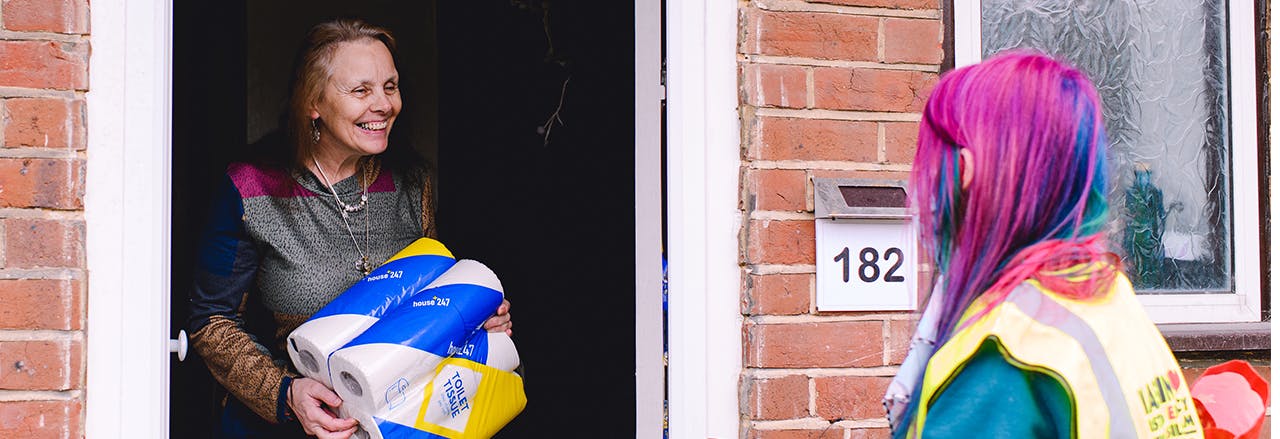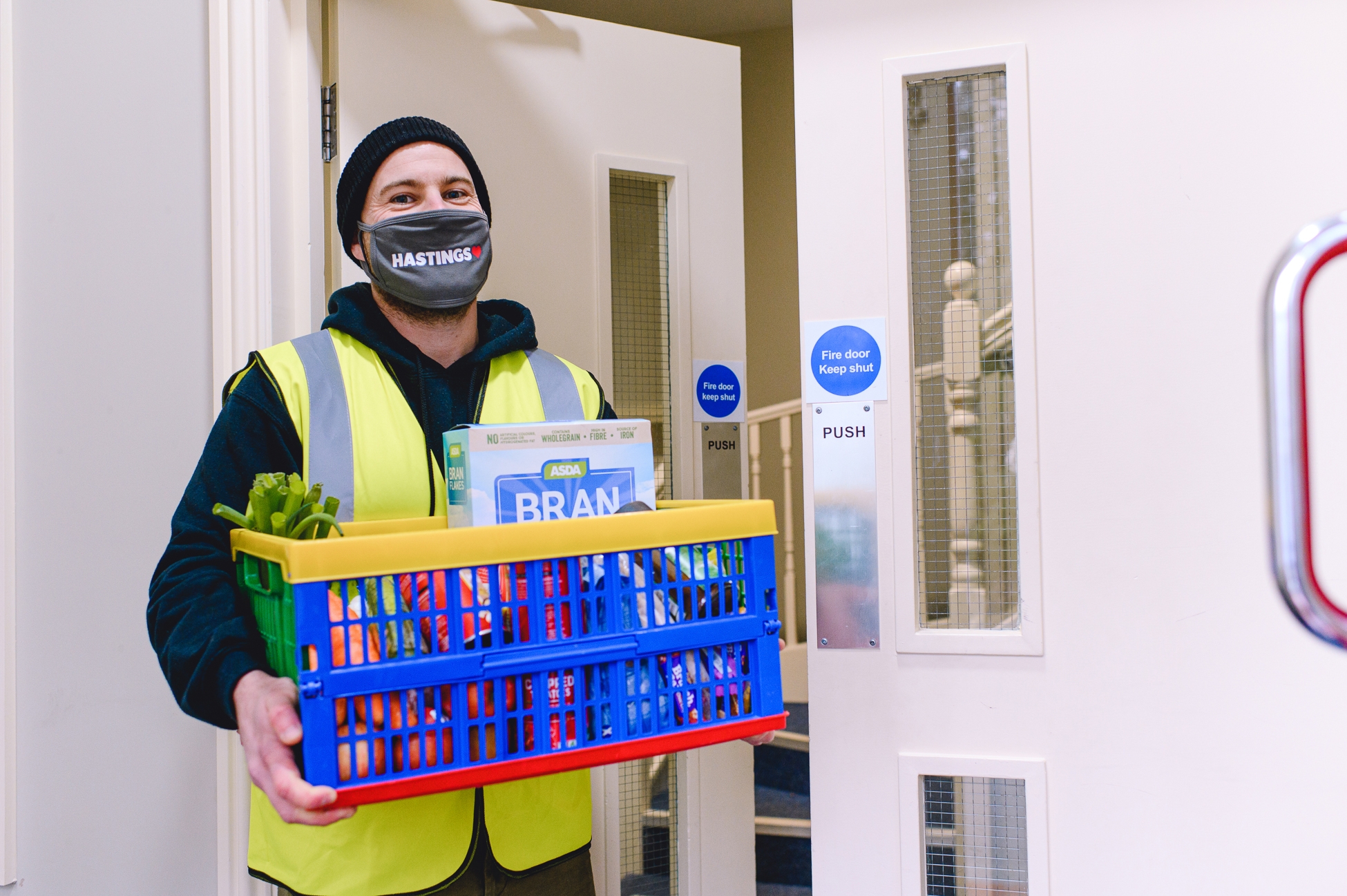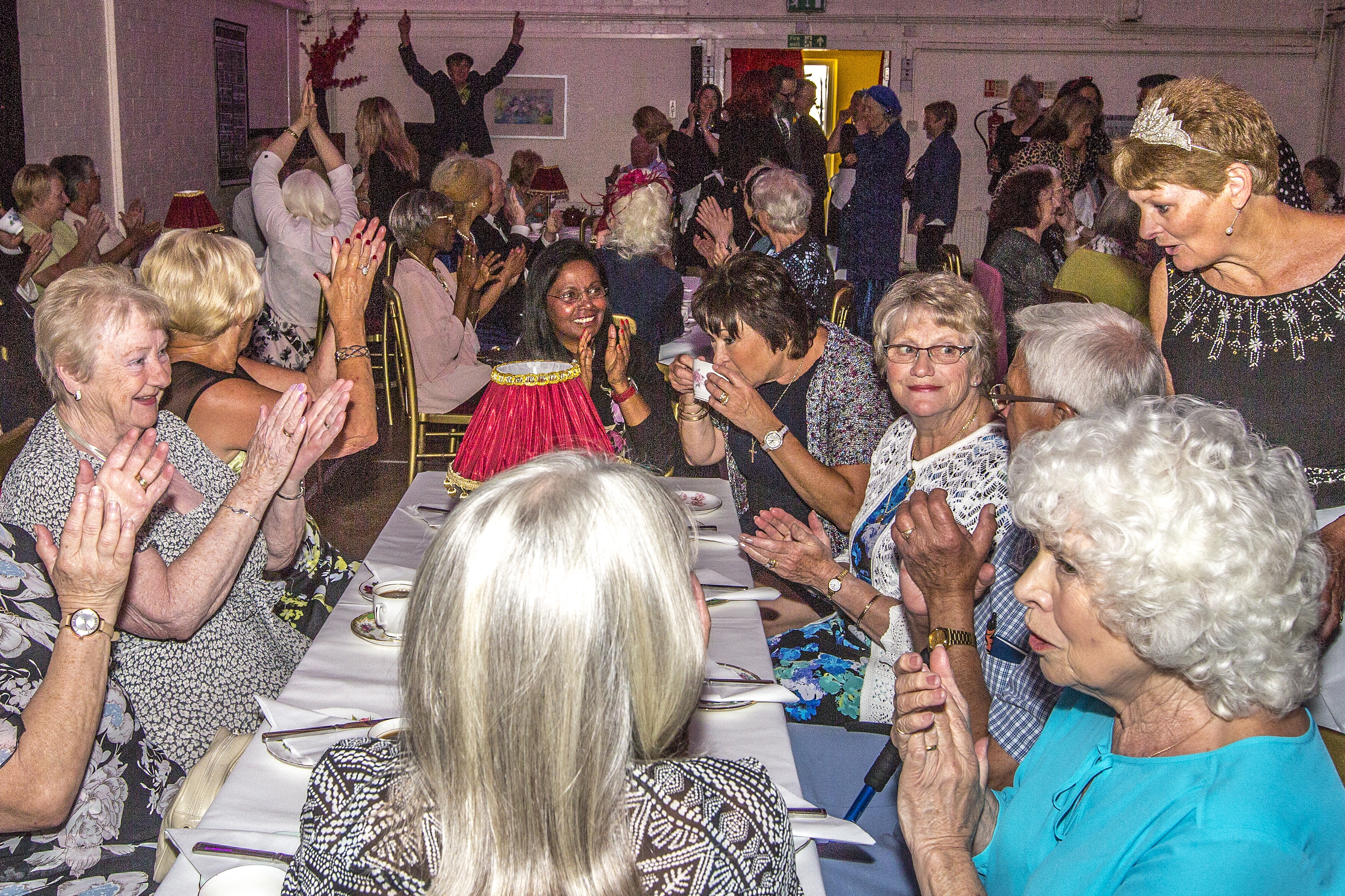
Hastings: From gentrification to cooperation
In February 2021, Knowledge and Learning Manager Temoor Iqbal spoke to a number of National Lottery Community Fund grantholders in Hastings to find out how some of our investment of over £3 million in the last five years is being used by the town and its people.
One particular story stood out: how grassroots organisations are reclaiming disused and underused spaces to provide affordable opportunities for the community to live, work and thrive, bringing the town’s long-term residents and a wave of newcomers together in the process.
Funding overview
In the five years to 2020-21, The National Lottery Community Fund has invested over £4 million in Hastings, through 122 grants to charities and community groups.
We’ve supported 101 local groups through small grants, with an average award size of £8,598, and we’ve given out 21 larger grants, with an average value of £171,648.
Our largest award was £487,520 to Project Art Works, to engage with people with complex learning disabilities using visual arts activities, helping them to build relationships and reduce isolation through improved communication. Our smallest award was £972 to Evesham Residents Association to fund an annual day trip and garden party, helping local people build stronger relationships to combat loneliness.
Around 25% of the projects we've supported in Hastings make use of arts, crafts and creativity to make a difference to people's lives. Drawing Life's Dementia Drawing project, for example, used a People's Projects award of £49,940 to deliver life drawing classes for people with dementia and their carers, giving caregivers and families new ways to connect with their loved ones, while boosting their confidence and building towards a local exhibition.
Demographic and cultural change
From the early fishing villages and ports that welcomed traders into the country to the Victorian democratisation of resort holidays, Britain’s coastal towns have long been sites of demographic and cultural change.
Over the past decade, towns like Hastings on England’s south coast have witnessed a new stage in this story, with incomers from London and Brighton drawn by a strong sense of community and perhaps the idea that “old ideas can sometimes use new buildings”, as urban theorist Jane Jacobs once put it, but “new ideas must use old buildings”.
Hastings is certainly not short of old buildings, with Victorian terraces and Georgian townhouses giving the town its unique charm, without attracting the top-end prices of the South-East’s major urban centres.
Cheaper property compared to London is often cited by new arrivals as one of Hastings’ main draws, with ‘affordability’ increasingly becoming a local buzzword.
However, whether property in Hastings is actually affordable remains a matter of perception – Land Registry data shows that average house prices in Hastings have risen 43% since 2015, compared to 31.9% across the UK as a whole.
If this trend continues, well-intentioned newcomers could end up pricing existing residents out of their communities.
Hastings has been placed in category one for the government’s Levelling Up Fund. This will see the local authority given an initial £125,000 in capacity funding to plan for local infrastructure improvement bids.
Houses for homes
If buildings are the question, though, perhaps they could also be the answer. Heart of Hastings Community Land Trust was set up with this in mind, and looks to safeguard affordable places to live and work.
Supported through our Reaching Communities programme, the organisation’s first project was the regeneration of the derelict power station site in Hastings’ Ore Valley area. The aim was to train a team of local people to build affordable homes and community infrastructure on the site.
Heart of Hastings was awarded a licence for stewardship of the land in 2016, but in 2019 the landowner opted for a different developer.
While this was no doubt a disappointment, the lessons learned during the intervening years – during which a team of volunteers opened the site up to local people as a shared space – have been vital in terms of community understanding, and for Heart of Hastings’ future work.
“One of the most important things we learned was how important it is to occupy space, and for people to have time to become familiar with it”, says Director Jess Steele. “Just being in a space helps people picture the future of it, their part in it, and what they can do to make it happen. That learning is now at the heart of everything we’re trying to do in the White Rock neighbourhood – that's the long-term legacy of the project.”
Heart of Hastings’ work in White Rock, which is among the 1% most deprived neighbourhoods in England according to the 2019 indices of deprivation, takes the form of collective social investment, with the organisation acquiring disused properties to renovate and rent out.
Working with partners White Rock Neighbourhood Ventures, the community land trust has brought nearly 8,000 square metres of space into community ownership. Having completed 10 flats and over 40 business spaces, the partners are in the process of developing a further 31 homes and around 2,500 square metres of work and leisure space.
Rents are linked to local incomes and capped to rise at the rate of inflation, ensuring that local people have the affordable infrastructure they need to live and work on an ongoing basis.
Heart of Hastings Community Land Trust has brought nearly 8,000 square metres of space into community ownership. Having completed 10 flats and over 40 business spaces, the partners are in the process of developing a further 31 homes and around 2,500 square metres of work and leisure space.
Beyond community centres
Providing affordable housing addresses a direct and urgent need, allowing a community to exist where it might otherwise be unable to afford to. To thrive, though, communities need more than just buildings to live in or community centres to meet in – they need infrastructure, connections and a shared sense of purpose.
Top-down development of new housing estates or the commercial renovation of old blocks can provide the former, but can’t facilitate the latter.
In Hastings, however, community-led reclamation and renovation has taken a bottom-up approach, allowing for additional benefits and uses to arise organically, through people-led initiatives and working together.
We supported Black Butterfly through the Coronavirus Community Support Fund in October 2020 for the Joyful Roots project, providing access to culturally relevant organic produce and land for members of Hastings’ BAME communities to grow organic produce for distribution via veg bags.
Director Dawn Dublin has prior experience of reclaiming unused buildings for community use, having been involved in the successful recovery of the abandoned Observer Building in the town centre in 2015. “We thought we could use the same place-making approach with Black Butterfly to get people access to land and buildings”, explains Dawn.
“We’ve taken over a warehouse in St Leonards that has been empty for years, which will be the main workspace and distribution hub for Joyful Roots. We hope to share this with Hastings Cargo Co, which works to reduce air pollution by using electric bikes to make local deliveries, and Girls Gone Greek, a street food business which played a key role in ensuring local families had meals during the school holidays.
"We’ll also be working with refugees and migrants through the Refugee Buddy Project, sharing skills and knowledge about culture, food growing and cooking. We always had the view that we wanted to co-habit the space and, thanks to our community and National Lottery Community Fund support, we are realising a dream in revitalising a long-term empty building and turning it into a community enterprise hub and urban garden.”
A similar approach has been followed by Project Artworks, a collective for neurodivergent creatives, and Eggtooth, which offers mental health and counselling services for young people, giving Hastings a future pipeline of reclaimed community spaces to look forward to.
The organisations have respectively secured 12 Claremont, a five-storey Victorian warehouse building in the town centre in need of repair, and Hastings’ Old Town Hall building, through Reaching Communities grants.
"Thanks to our community and National Lottery Community Fund support, we are realising a dream in revitalising a long-term empty building and turning it into a community enterprise hub and urban garden.”Dawn Dublin, Black Butterfly
Bridging the divide
The aim of grassroots community work, ultimately, is not to stop change from happening, but rather to mitigate its more harmful effects and maximise the positives for as many people in the community as possible.
At a town meeting in 2019, Sussex-based research organisation Coastal Action gauged local people’s views of ‘gentrification’, finding that although over 40% of the 75 respondents felt Hastings was changing rapidly, opinions on the merits of this change depended on the length of time people had been in the town.
For those who had been residents for five or more years, only around 20% felt included in the changes and only around 10% felt the changes had improved their lives, compared with over 80% and over 65% respectively for those who had moved within the past five years.
In this light, projects like Heart of Hastings, Black Butterfly and others are essential for Hastings’ established community, in terms of providing places to live and addressing the deeper need for a sense of inclusion and forward momentum.
But if it largely serves to benefit long-term residents, does community work effectively exclude or ignore the town’s sizable and growing community of newcomers?
Hastings’ Covid-19 response went some way to answering this question. Supported by a £49,930 grant through our National Lottery Covid-19 Fund, Hastings Emergency Action Resilience Team (HEART) was set up in March 2020. Within a month the project had recruited over 1,000 volunteers, bringing people together from across different groups and demographics, including long-term and newer residents.
“There’s a mix of ages, skill sets and experience, and there’s a mix in terms of the time that they have been within the community”, says Alastair Fairley, HEART’s Joint Coordinator. “I would imagine quite a high proportion would be people that have come to live here within the past five to 10 years.”

Beyond simply including people from across perceived community divides, however, the pandemic may even have accelerated the process of integration for many. “Many of the volunteers have really enjoyed getting stuck in because it offered a mechanism for them to get involved in their local community”, says Alastair. “They're loving the fact that they're finding something down here they can really get their teeth stuck into, and getting involved with all sorts of different networks rather than just meeting people down the pub.”
This has also been the case for The Posh Club, a community music and social club. A Reaching Communities grant of £449,740 supports branches of The Posh Club in Hastings, Brighton and Crawley, with the Hastings branch particularly aimed at combating social isolation and loneliness.
“Our clubs are for the over-60s, but we’ve had so much enthusiasm from younger people who are new to the town as well – they help us with our tech and then they get involved too”, says organiser Wendy Metson.
The club, which attracted combined attendance of nearly 3,000 people in its first year (2019/20) and has engaged with over 4,000 older people through digital, doorstep and written communication since the beginning of the Covid-19 pandemic, is run from a church hall. This is an important part of its identity and positioning, according to founder Simon Casson: “We never use theatres or art centres, because they come with their own cultural baggage and speak to a particular demographic. We use grassroots spaces, and actually - before we started working in church halls - I never really knew anyone who went to church, but vicars have been so welcoming and supportive.”

The benefits of this go both ways, too. “When we started running the Hastings Posh Club from a church hall, we were able to do loads of work on the space”, explains host Rachel Spinetti.
“We put in accessible toilets, ramps for wheelchair access and new kitchen equipment, and we tidied up the garden and painted the space. That benefits us, but it’s also brilliant for everyone else using the church hall – the whole community.”
“Many of the volunteers have really enjoyed getting stuck in because it offered a mechanism for them to get involved in their local community. They're loving the fact that they're finding something down here they can really get their teeth stuck into, and getting involved with all sorts of different networks rather than just meeting people down the pub.”Alastair Fairley, HEART
Self-made success
So, although property prices have risen significantly in Hastings over the past decade, there have clearly been improvements too. A lot of that positive change is down to the efforts of the local community, which means a mix of long-term residents and new entrants.
“Newcomers bring fresh perspectives and add diversity, which can benefit the entire community, for example by nourishing the aspirations of local young people through providing diverse role models”, explains local resident Erica Smith, who has witnessed much of the recent change first-hand. “I moved to Hastings in 2002 and have always lived in the town centre. I never felt unsafe, but it was a lot rougher, especially for young men. It’s very different now!”
This forward trajectory is timely for Hastings, which has been placed in category one for the government’s Levelling Up Fund. This will see the local authority given an initial £125,000 in capacity funding to plan for local infrastructure improvement bids.
What Hastings’ community and grassroots organisations have demonstrated is that they have the understanding of the town’s infrastructure challenges and the experience to bring members of the public into the conversation to contribute to this process.
Locality’s 2021 report on coastal communities highlights this, observing that “there is a strong ecosystem of VCSE initiatives in Hastings seeking to put community voice and engagement at the heart of the conversation about the future of the town”. The report concludes by recommending that community power is placed at the heart of local regeneration strategies, noting that there is a real opportunity for community-led economic recovery in coastal towns.
With National Lottery Community Fund support, the Hastings community has shown that this approach is practicable, with bottom-up leadership that includes all residents, old and new, and is founded on a real sense of what’s possible when people are given a chance to envision their future. Time will tell if this is the path to long-term economic, social and infrastructural improvement, but the evidence suggests that it’s the right approach for Hastings.